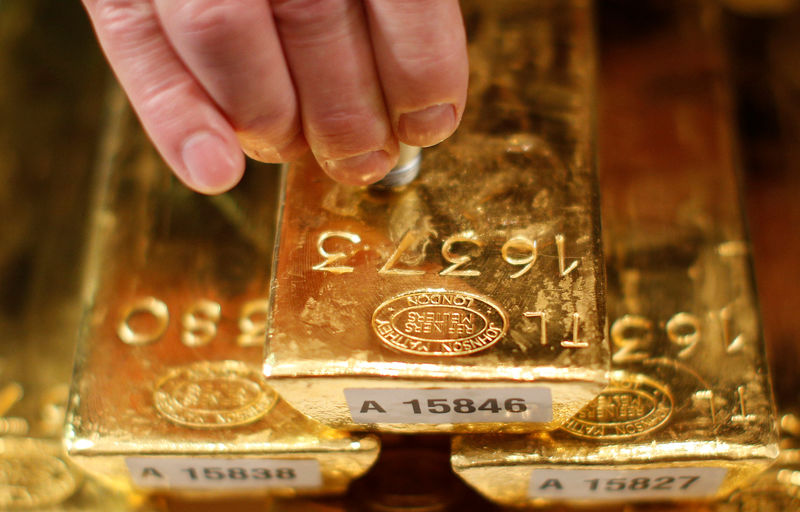Investing.com-- Gold prices fell in Asian trade on Tuesday, remaining pinned well below recent peaks as fears of higher-for-longer U.S. interest rates grew before a Federal Reserve meeting this week.
Waning safe haven demand also weighed, especially as recent reports showed renewed ceasefire talks between Israel and Hamas. This left gold even more vulnerable to rate-driven risks.
Spot gold fell 0.4% to $2,326.45 an ounce, while gold futures expiring in June fell 0.9% to $2,337.30 an ounce by 00:44 ET (04:44 GMT). Spot prices were trading more than $100 below a record high hit earlier in April.
But despite recent declines, gold prices were still trading up over 4% for April, extending stellar gains seen in March.
Fed jitters pressure gold as rate cut hopes wane
Focus was now squarely on a Fed meeting later this week, where the central bank is widely expected to keep rates steady. But Fed Chair Jerome Powell is expected to offer a more hawkish outlook on rates, especially following a series of hot inflation readings.
Signs of sticky inflation saw traders largely price out expectations of near-term interest rate cuts by the Fed. The central bank is now only expected to cut rates in September, or the fourth quarter, if at all this year.
Higher-for-longer rates bode poorly for gold, given that they increase the opportunity cost of investing in the yellow metal. Strength in the dollar, on the prospect of steady rates, also pressured broader metal markets.
Other precious metals also retreated on Tuesday. Platinum futures fell 0.1% to $959.05 an ounce, while silver futures slid 1.8% to $27.168 an ounce.
Copper prices stall on middling China PMIs, but set for stellar April
Among industrial metals, copper prices hovered around two-year peaks on Tuesday as momentum in a recent rally was sapped by mixed purchasing managers index readings from top importer China.
Three-month copper futures on the London Metal Exchange steadied around $10,185.0 a ton, while one-month copper futures fell 0.1% to $4.6738 a pound.
Official PMI data from China showed manufacturing activity slowed a hair less than expected in April from March. But non-manufacturing activity slowed much more than expected.
While a private survey painted a better picture of the manufacturing sector, Tuesday’s data still outlined sustained weakness in the Chinese economy, despite a strong first quarter.
This raised some questions over strong copper demand in the world’s biggest importer of the red metal.
Still, copper prices were sitting on a stellar melt-up through March and April, as the prospect of tighter supplies- amid more sanctions on Russia and production cuts by Chinese refiners- spurred increased buying in the red metal.
Copper futures were up between 14% and 16% in April.
